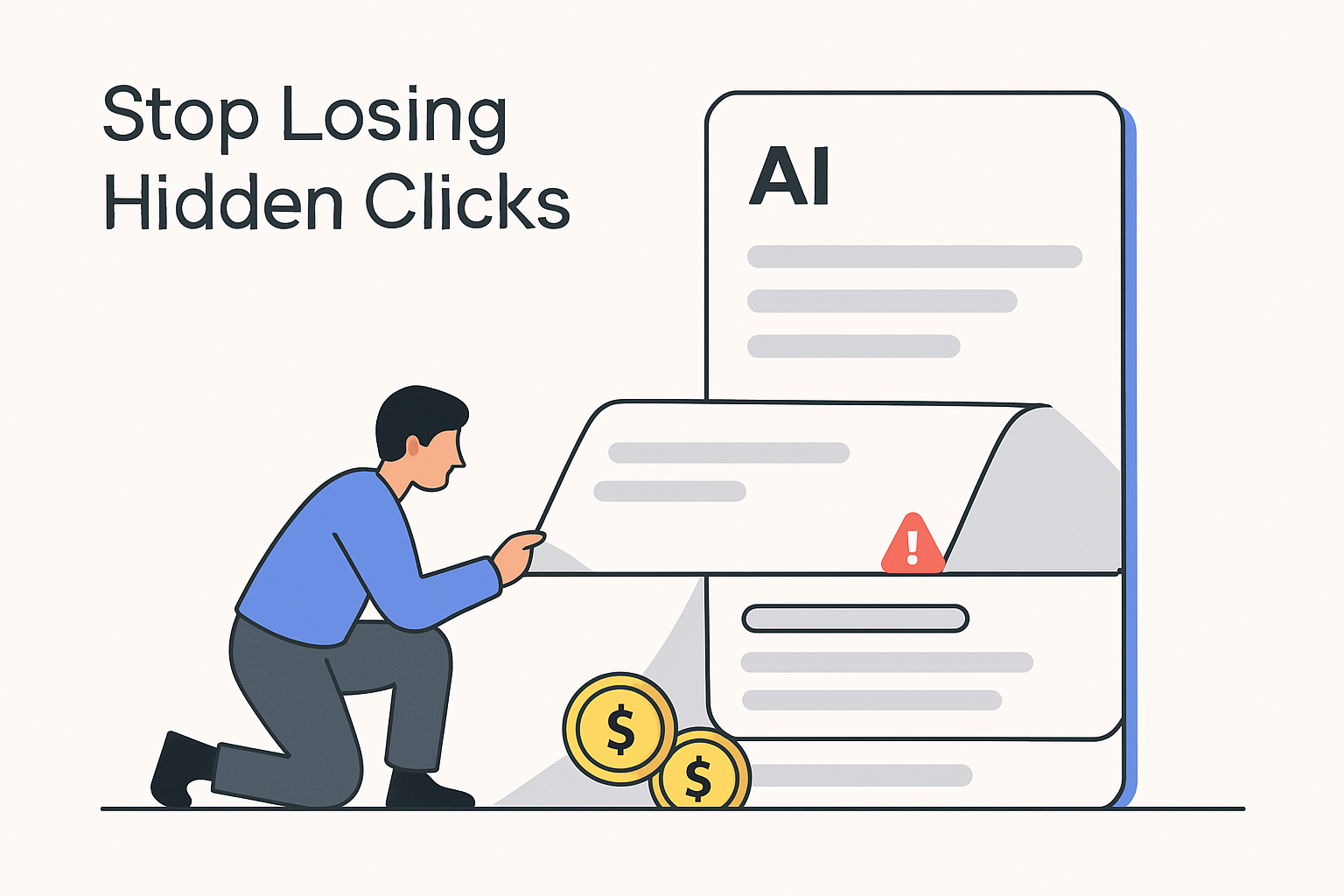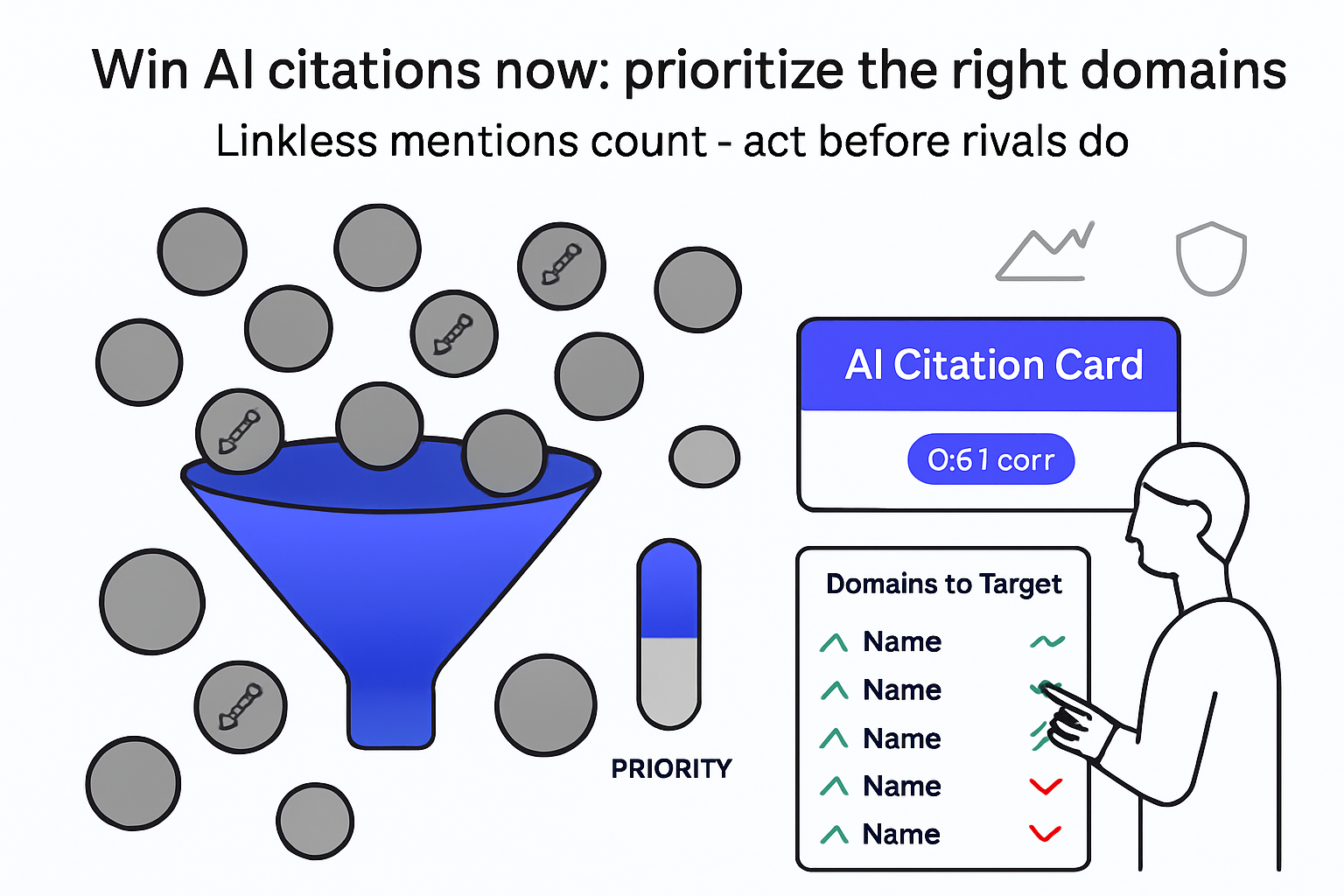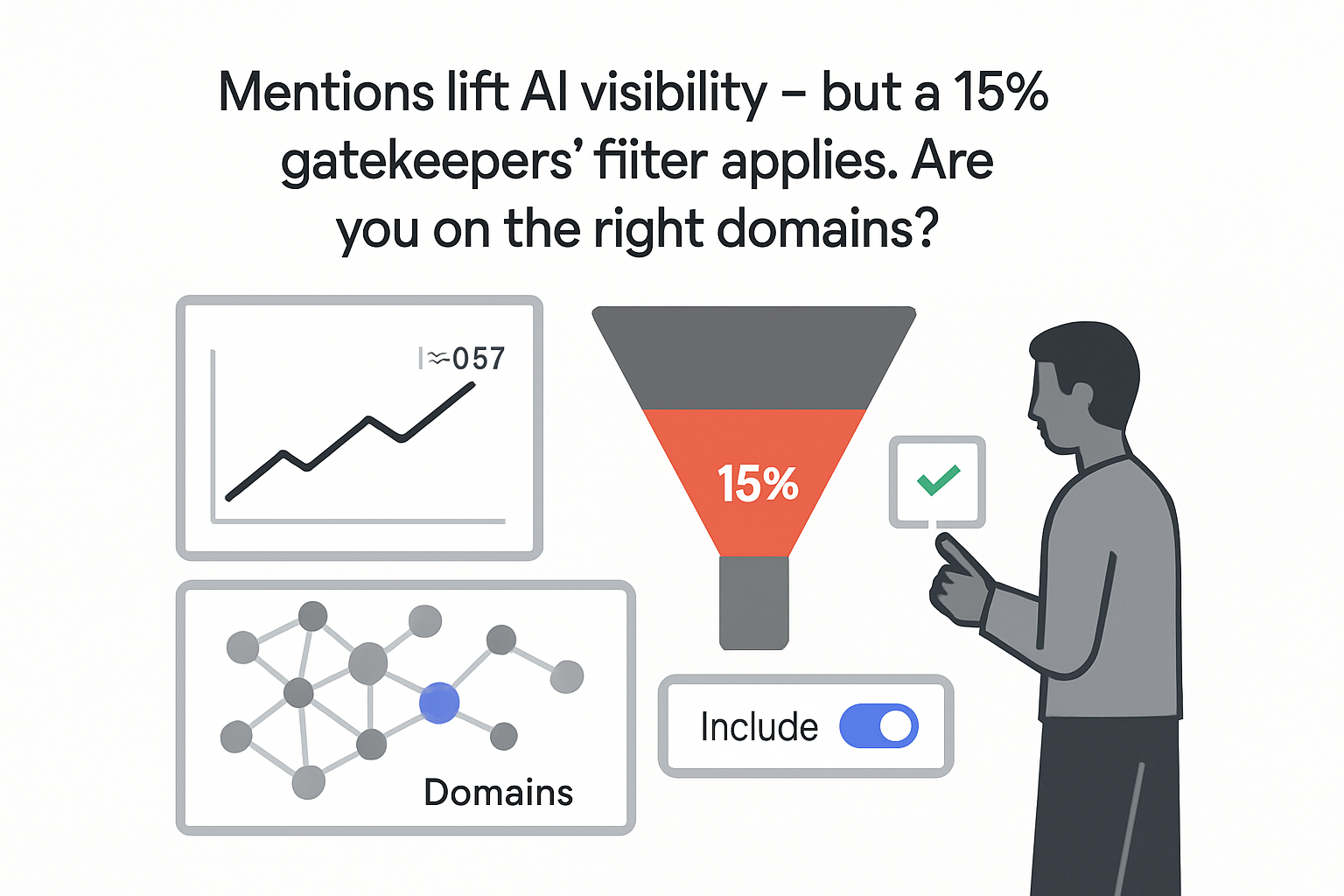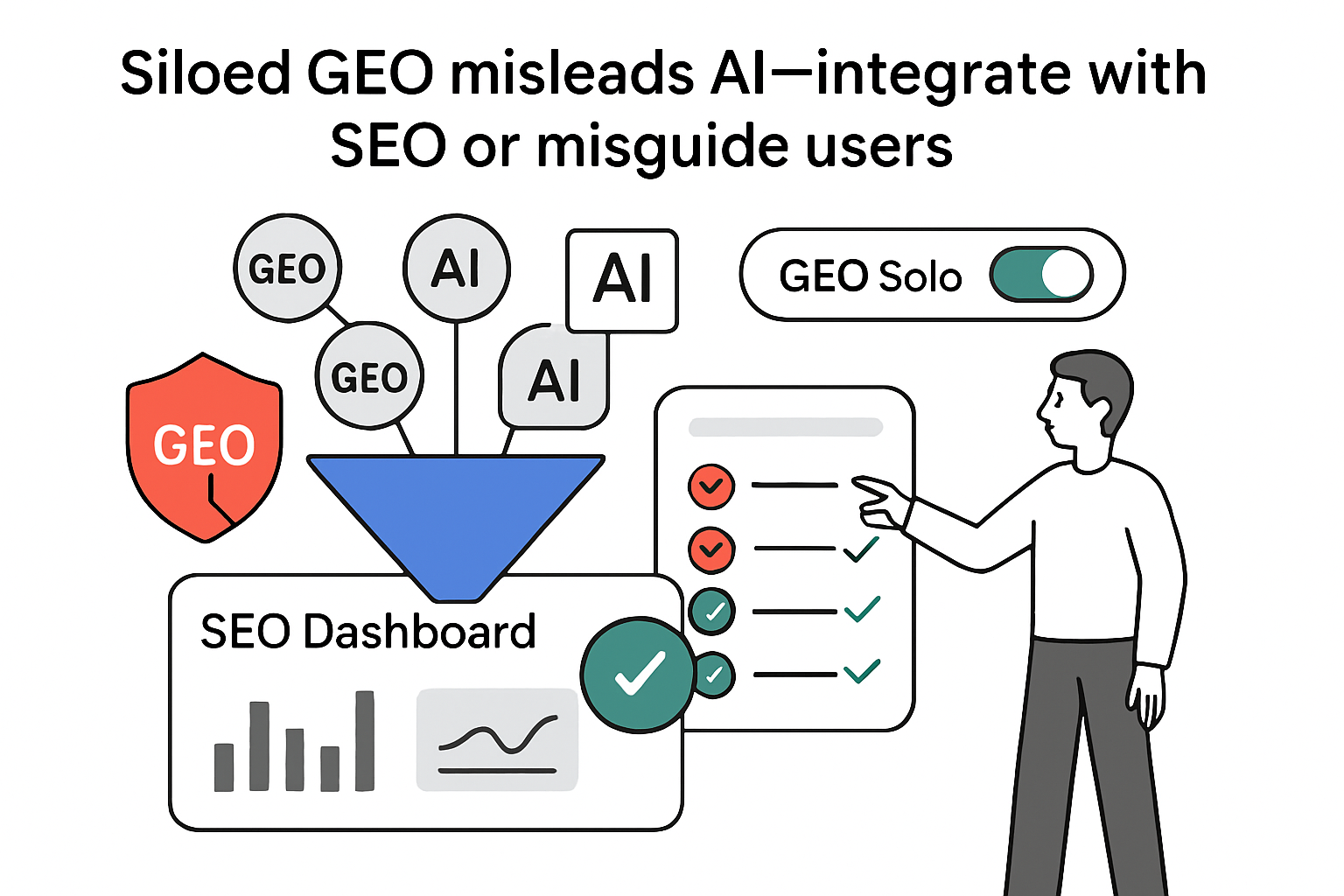2024 Search Trends: AI Visibility, Off-Screen Conversions & Attribution Data
Executive Snapshot
- 84% of sampled Google queries in the SGE test displayed an AI-generated snapshot, displacing traditional organic listings [S2].
- 44% of online adults use voice or assistant search at least weekly, underscoring the shift toward conversational discovery [S3].
- U.S. consumer phone calls driven by search are projected to reach 71 billion in 2026, up from 61 billion in 2022 (+16%) [S4].
- Only 15% of firms mine the call recordings they already collect, leaving structured buyer language untapped [S6].
- Just 24% of marketers employ multi-touch attribution, even though cross-device actions already account for 36% of Google Search conversions [S7][S8].
Implication: Programs that treat clicks as the sole indicator of demand overlook at least one in three decisive buyer interactions.
Method & Source Notes
S1 Gartner, "Predicts 2024: Search and Insight Engines," Dec 2023 - expert projection, secondary data review.
S2 BrightEdge, "Generative Search Insights," Aug 2023 - 20,000 U.S. queries analyzed.
S3 GWI, "Search & Discovery Q2 2023" - 212,000 respondents across 48 markets; online survey.
S4 BIA Advisory Services, "Call Volume Forecast," 2023 - economic modeling of U.S. local commerce.
S5 Invoca, "State of the Phone Call 2023" - survey of 500 U.S. marketers + platform log data.
S6 Gartner, "Speech Analytics Survey 2022" - 312 customer-experience leaders.
S7 Merkle, "Customer Engagement Report 2023" - 450 global marketers.
S8 Google Ads Blog, "Cross-Device Conversions Update," Apr 2023 - aggregated advertiser data.
Limitations: voice-search use is self-reported; call-volume forecast U.S.-only; SGE still in beta.
Future of Search: AI Snapshots Shrink Traditional Result Clicks
Generative answer boxes now appear on 84% of tested Google queries, often pushing the first organic link below the fold [S2]. Gartner forecasts that routine, fact-finding queries handled by generative chatbots will cut traditional search volume 25% by 2026 [S1]. Early SGE reviews show that single-sentence answers, tables, and bullet lists earn more citations than dense paragraphs. Exact-match keywords appear in only 8% of cited passages, suggesting that context and formatting now outweigh keyword frequency [S2]. Brands that rely on rank alone risk invisibility when the answer is served inside the snapshot.
Offline and Voice-Based Conversions Missing From Analytics
Search still initiates high-value actions that never trigger a tracked web event. Calls placed after a local or branded search reached 61 billion in 2022 and are forecast to top 71 billion by 2026 [S4]. Invoca finds that 80% of multichannel shoppers phone a business within 15 days of a purchase and those calls convert 30% better than web leads [S5]. Yet the average Google Analytics setup captures only online form fills. When one service brand added dynamic phone-number insertion, attributed organic-search revenue rose 19% in 90 days [S5].
Voice-of-Customer Analysis Improves Messaging
Nearly half of organizations store conversation recordings, but only 15% analyze them with speech-to-text or keyword mining [S6]. Teams that do so report a 23% lift in conversion-rate optimization projects compared with peers who rely on brainstorming alone [S6]. One B2B agency cited in Invoca's dataset increased qualified leads 67% after replacing internal jargon with customer language extracted from call transcripts [S5]. Structured conversation data delivers buyer vocabulary and objections at scale, replacing guesswork in copywriting and product pages.
Paid Search Performs Better When Aligned With Organic and AI Touchpoints
Merkle's 2023 media-mix modeling shows that campaigns reusing the same value proposition across paid and organic listings achieve a 28% higher incremental return on ad spend than fragmented messaging [S7]. Pulling phrases from call transcripts into ad copy raised click-through rates 11% on average across 47 Invoca advertisers [S5]. Alignment must continue after the click: landing pages tailored to the buyer's declared stage (e.g., "pricing" vs "how it works") shortened the sales cycle 14% in a B2B software test run by Merkle [S7].
Multi-Touch Attribution Must Reflect Cross-Device Journeys
Google data shows that 36% of search-driven conversions close on a device different from the one that started the session [S8]. Yet only one in four marketers use multi-touch or cross-device models [S7]. Reliance on last-click undervalues upper-funnel content, especially AI snapshots that send zero traffic yet influence consideration. B2C retailers that switched from last-click to data-driven attribution reallocated 12% of paid-search budget to upper-funnel keywords and saw a 9% revenue uptick within two quarters [S8].
Interpretation & Implications
- Likely: Structuring content into concise answers, lists, and tables materially increases the chance of citation in AI snapshots, preserving visibility as clicks decline.
- Likely: Adding call-tracking numbers and piping conversation data into analytics captures higher-margin leads that web metrics omit, improving bid and content decisions.
- Tentative: Speech-analytics tooling offers a low-cost source of copy and keyword ideas that outperform brainstorming, but adoption lags due to privacy concerns and integration effort.
- Speculative: As generative answers mature, Google may favor first-party data signals, such as call outcomes, when ranking local and transactional snippets.
Contradictions & Gaps
- BrightEdge reports 84% snapshot coverage, while Sistrix's July 2023 monitoring shows 62%; differing keyword sets and geographies cloud comparisons.
- Little independent data exists on how often AI summaries drive brand recall without a click; current figures are extrapolated from lab studies.
- Call-tracking adoption remains uneven in regions with stricter data-protection rules; efficacy outside the U.S. is under-researched.
Data Appendix (Selected)
Voice or assistant search usage, global, Q2 2023:
16-24 yrs - 51%; 25-34 yrs - 47%; 35-44 yrs - 43%; 45-54 yrs - 37%; 55-64 yrs - 31% [S3].
Cross-device share of Google Search conversions, 2020-2023:
2020 - 31%; 2021 - 33%; 2022 - 35%; 2023 - 36% [S8].







.svg)